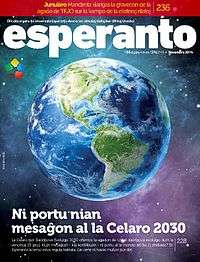
City
A city is a large and permanent human settlement. Although there is no agreement on how a city is distinguished from a town in general English language meanings, many cities have a particular administrative, legal, or historical status based on local law.
Cities generally have complex systems for sanitation, utilities, land usage, housing, and transportation. The concentration of development greatly facilitates interaction between people and businesses, benefiting both parties in the process, but it also presents challenges to managing urban growth.
A big city or metropolis usually has associated suburbs and exurbs. Such cities are usually associated with metropolitan areas and urban areas, creating numerous business commuters traveling to urban centers for employment. Once a city expands far enough to reach another city, this region can be deemed a conurbation or megalopolis. In terms of population, the largest city proper is Shanghai, while the fastest-growing is Dubai.
Origins
There is not enough evidence to assert what conditions gave rise to the first cities. Some theorists have speculated on what they consider suitable pre-conditions and basic mechanisms that might have been important driving forces.
City government in Washington (state)
There are 281 municipalities in the U.S. state of Washington. State law determines the various powers its municipalities have.
City classes
Legally, a city in Washington can be described primarily by its class. There are five classes of cities in Washington:
First class cities are cities with a population over 10,000 at the time of reorganization and operating under a home rule charter. They are permitted to perform any function specifically granted them by Title 35 RCW (Revised Code of Washington). Among them are Seattle, Tacoma, Spokane, Vancouver, and Yakima.
Second class cities are cities with a population over 1,500 at the time of reorganization and operating without a home rule charter. Like first class cities, they are permitted to perform any function specifically granted them by Title 35 RCW. Among them are Port Orchard, Wapato, and Colville.
Towns are municipalities with a population of under 1,500 at the time of reorganization. Towns are not authorized to operate under a charter. Like the previously listed cities, they are permitted to perform any function specifically granted them by Title 35 RCW. Among them are Steilacoom, Friday Harbor, Eatonville, and Waterville. In 1994, the legislature made 1,500 the minimum population required to incorporate.

Administrative divisions of Texas
Texas has a total of 254 counties, many cities, and numerous special districts, the most common of which is the independent school district.
County
Texas has a total of 254 counties, by far the largest number of counties of any state.
Each county is run by a five-member Commissioners' Court consisting of four commissioners elected from single-member districts (called commissioner precincts) and a county judge elected at-large. The county judge does not have authority to veto a decision of the commissioners court; the judge votes along with the commissioners (being the tie-breaker in close calls). In smaller counties, the county judge actually does perform judicial duties, but in larger counties the judge's role is limited to serving on the commissioners court and certifying elections. Certain officials, such as the sheriff and tax collector, are elected separately by the voters, but the commissioners court determines their office budgets, and sets overall county policy. All county elections are partisan, and commissioner precincts are redistricted after each ten year Census both to equalize the voting power in each and in consideration of the political party preferences of the voters in each.

Esperanto (magazine)
“Esperanto” is the main magazine used by the World Esperanto Association to inform their members of virtually everything happening in the world related to the international language Esperanto.
History
The magazine was founded in 1905 by the Frenchman Paul Berthelot. In 1907, the Swiss Hector Hodler became editor-in-chief. The post has been held since January 2014 by the Brazilian Fabrício Valle, successor to Stano Marček.
The magazine was not published during the two World Wars. In-between, Edmond Privat was the director.
Contents
The magazine shows events related to Esperanto, gives interviews of key actors in the Esperanto community, informs about the last published works. There also are opinions, analyses and decisions.
External links

Esperanto (Shadowfax album)
Esperanto is the ninth studio album by new-age/jazz group Shadowfax. It was nominated for the Grammy Award for Best New Age Album in 1993, losing out to Enya's Shepherd Moons.
The cover art is by Mimi LaPlant.
Track listing
Personnel
Freundeskreis
Freundeskreis (meaning "Circle of Friends") also known as FK, were a German hip hop group from Stuttgart. They performed songs in German, English, French and Esperanto. The members were Max Herre, Don Philippe and DJ Friction.
They were a socially conscious German rap group that released three top twenty albums. Rapping in several languages is common in German hip hop. One of their early albums, Krauts with Attitude, contained only three songs in German with eleven in English and one in French.
History
Freundeskreis
Freundeskreis were primarily known for their political lyrics, in which they advocate equality and international understanding. After the much-noticed first album, Quadratur des Kreises (Squaring the Circle), and its hit single "A-N-N-A" which peaked at #6 in the German charts, the band released its second album, Esperanto, named after the constructed language Esperanto. The reasoning for the name was that the group wished to show that they believe that hip hop should be the Esperanto of youth.
Podcasts:

